Phlox is a bright plant whose flowers have a diverse color. By their nature, they belong to unpretentious crops, but from proper care in the autumn and compliance with the rules of wintering depends on how lush a hat of flowers the gardener will receive in the next season. Phlox wintering takes place differently depending on the latitude of growth; maintaining the plant's health in the winter in the middle lane is less problematic, while gardeners from the Urals may encounter some difficulties. How to provide phlox care in the fall after flowering and whether it is necessary to shelter them for the winter, the answers to these questions depend on the localization of growth.
Content
- 1 Autumn events for gardeners
- 2 Is it possible to plant phlox in autumn
- 3 Preparing phlox for the winter
- 4 What are the features of preparing the plant for winter in different regions
- 5 Phlox pruning in the fall
- 6 Fertilizer application
- 7 Soil mulching
- 8 Watering Phlox in Autumn
- 9 Disease Prevention and Phlox Pest Protection
- 10 Shelter for the winter
- 11 Common mistakes in phlox care in autumn and in preparation for winter: take care correctly
- 12 Useful tips for phlox care after wintering
- 13 Finally
Autumn events for gardeners
 Autumn is no less busy season for the gardener than spring, you need to work hard to preserve the health of all crops in the garden and to avoid freezing. Autumn phlox care includes:
Autumn is no less busy season for the gardener than spring, you need to work hard to preserve the health of all crops in the garden and to avoid freezing. Autumn phlox care includes:
- If autumn is dry, the bushes should be constantly watered at the rate of 2 buckets per 1 sq. Meter of planting. Watering is carried out in cloudy weather in the evening, avoiding the ingress of liquid on the stems and leaves of the plant. It is better to use a watering can with a long nose - excess moisture will lead to decay of the bush.
- To get abundant flowering in the next summer season, you need to feed phlox in the fall. For this, phosphate-potassium fertilizers are used. Before fertilizing, the earth needs to be shed, the roots of the plant are sensitive, therefore, the introduction of nutrition into dry soil is unacceptable.
- To avoid damage to the culture by pests, it is necessary to add a little ash under the bush.
- Before covering phloxes, the soil needs to be well loosened. Gardeners need to remember that the roots are on the surface, so you need to act carefully.
- Mulching the soil will help preserve phlox in winter. Compliance with this rule is necessary because the roots of the plant lie on the surface and often come out of the soil. Even in central Russia, soil freezing is traced, without snow cover - it is fatal to the culture. As mulch, peat, compost, manure can be used.
- Need to prune phlox for the winter to avoid disease damage and pests. Florists recommend leaving a stump of 2 to 20 cm long. Pruning is carried out a month after flowering.
The described rules are general recommendations ensuring the safety of a perennial plant, its health and lush flowering in the next season.
Is it possible to plant phlox in autumn
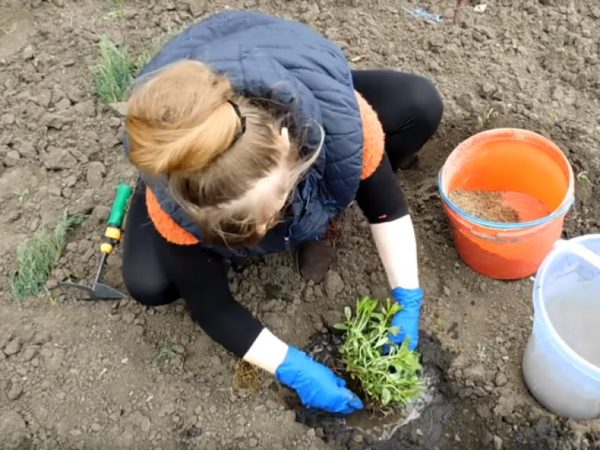 Phlox is an unpretentious culture, which can be transplanted not only in spring and summer, but also in autumn. If you provide proper care after manipulation, the plant will tolerate it well.Some flower growers, on the contrary, recommend abandoning planting on hot days and wait for autumn - this way the plant tolerates the process more easily and blooms in the next season, transplanted in the spring often get sick during the summer and then develop worse. In summer, you can transplant the plant only if necessary.
Phlox is an unpretentious culture, which can be transplanted not only in spring and summer, but also in autumn. If you provide proper care after manipulation, the plant will tolerate it well.Some flower growers, on the contrary, recommend abandoning planting on hot days and wait for autumn - this way the plant tolerates the process more easily and blooms in the next season, transplanted in the spring often get sick during the summer and then develop worse. In summer, you can transplant the plant only if necessary.
Prepare transplanted phlox for the winter in the fall as well as established crops. Be sure to arrange the mulching of the soil, fertilizer, if a transplant is carried out, do not make it - the chemical composition can damage the root system.
In regions characterized by an early onset of cold weather, it is recommended to grow early varieties. They finish their flowering early, which allows for a successful transplant. If it is impossible to perform surgery in the fall, it is better to transplant the flower in the spring.
Phlox planting dates in autumn
You can plant a plant in the fall before the onset of cold weather and the arrival of night frosts. It is better to transplant 1-2 weeks after flowering - during this time, the necessary nutrients accumulate in the stems of the plant. Before as drop phlox trim it. This condition is necessary for better rooting. Large shoots are cut, leaving no more than 20 cm, if the plant is young with a cut, no more than 5 cm remains. Mulching of the soil is necessary because the roots are not adapted to winter cold and die quickly after winter freezing.
Choose planting material
In autumn, it is better to transplant large delenki, because they tolerate frost more easily and take root well. It is also necessary to ensure the transshipment of flowers grown in summer from spring cuttings. The planted plot should have at least two stems, they are cut, leaving hemp with a height of up to 20 cm, at the base of the hemp there should be buds.
It is advisable to dig up the plant without damaging the earthen coma. In this case, adaptation to new conditions will be as simple as possible. The crown of the inflorescence is removed from such plants and 4-8 healthy leaves are left for nutrition.
How to choose a place to land
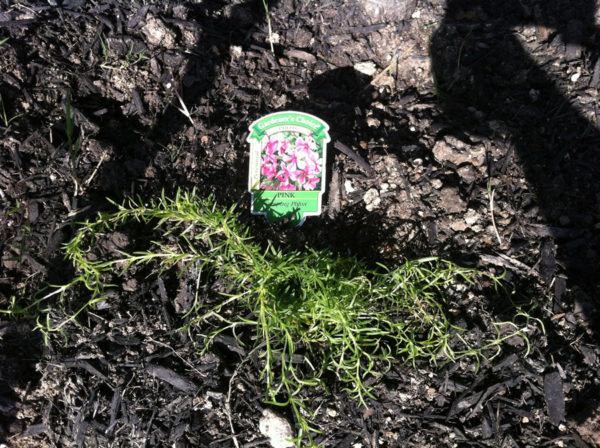 A couple of weeks before the plant transplant, you need to do soil preparation. It must be cleaned of grass and debris. If clay soil needs to be added sand. Because phlox grows in fertile loamy areas. If the mail is sandy, it is worth adding a little black soil or clay.
A couple of weeks before the plant transplant, you need to do soil preparation. It must be cleaned of grass and debris. If clay soil needs to be added sand. Because phlox grows in fertile loamy areas. If the mail is sandy, it is worth adding a little black soil or clay.
After normalizing the composition of the soil, lime, ash and fertilizers are applied. Dig a layer of soil to a sufficient depth - at least 30 cm, because the root system of the plant in the first years after planting actively grows in depth.
For landing, you need to prepare a hole of good width and depth. The roots in it should fit freely.
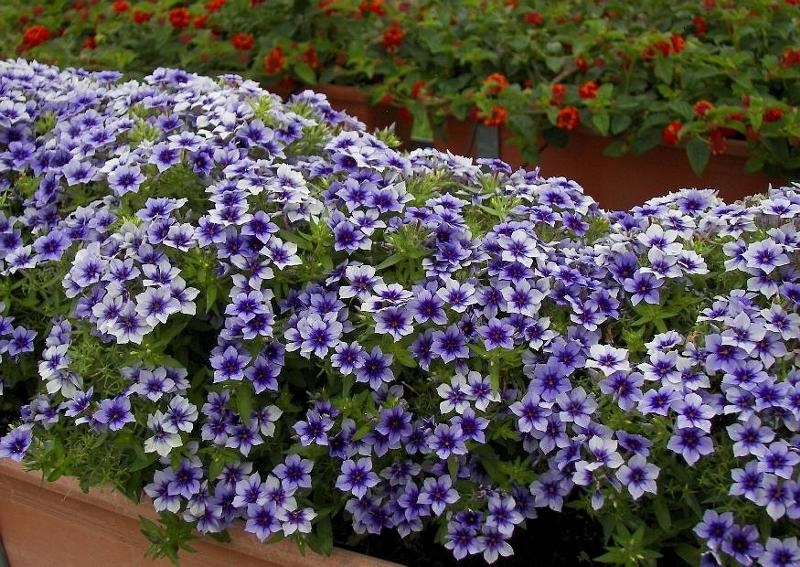 You may be interested in:
You may be interested in:Preparing phlox for the winter
Like other perennial plants, phlox after the onset of cold weather lose their green mass and die before spring. To prevent decay of the entire shrub, gardeners must remember the need for autumn pruning. The process of preparing for wintering, you need to start depending on the variety, because pruning phlox after flowering is in August-September.
How to properly prepare phlox for winter depends on the region of growth and the plant variety itself. Old types of phlox accustomed to harsh winters. Therefore, they can survive a cold and snowy winter even without shelter, but there is a risk of losing part of the seedlings.New varieties are not adapted for growth in cold conditions, because they are bred by breeders in greenhouse conditions or in regions with a mild climate.
What are the features of preparing the plant for winter in different regions
 The seriousness and need for the construction of massive sheltering structures is considered depending on the growing conditions of the plant. In regions with a mild climate, shelter, by contrast, can harm the plant. Due to excessive heat, it can wake up early and damage young shoots when frozen. This condition explains the need for a private approach to the issue of sheltering phlox for the winter. Depending on the regions, the recommendations are as follows:
The seriousness and need for the construction of massive sheltering structures is considered depending on the growing conditions of the plant. In regions with a mild climate, shelter, by contrast, can harm the plant. Due to excessive heat, it can wake up early and damage young shoots when frozen. This condition explains the need for a private approach to the issue of sheltering phlox for the winter. Depending on the regions, the recommendations are as follows:
- In the middle lane, for example, in the Moscow Region and Moscow Region, the climate cannot be called harsh, because phlox winter well after trimming shoots to a depth of 2-5 cm. To avoid freezing the roots, it is recommended to arrange mulch.
- For the Volga region, recommendations are changed, pruning is carried out in the same way, but it is recommended to cover the mulch with tops or branches.
- In the Urals, phlox should be pruned, leaving a stump of about 8-10 cm, the mulch should be covered with tops and branches, and during the winter it is important to warm the plant with snow.
- Winter phlox care in Siberia is complicated. Because of the fierce winters, the plant is not cut, they put mulch, and from above they are insulated with branches and foliage.
Phlox pruning in the fall
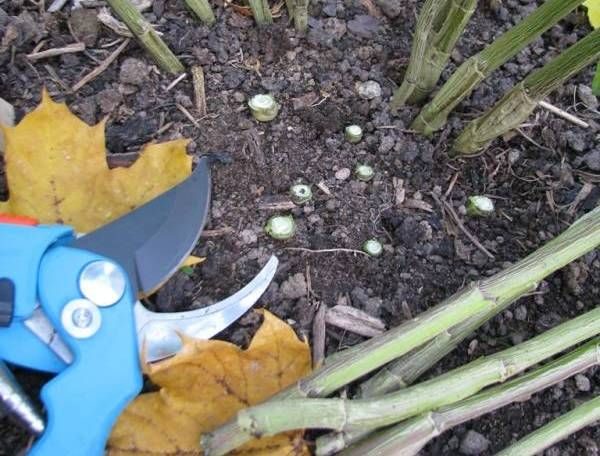 The opinion of gardeners regarding the issue of pruning in autumn varies. Part believes that pruning will help to safely transfer the winter. While others say that this is a real stress before the cold. There is no erroneous opinion here. Phlox can be trimmed in the middle lane and in the Volga region, pruning before winter in Siberia and the Urals should not be done. In this case, the operation is carried out in the spring, under the influence of sunlight the phlox will quickly grow and form a lush bush.
The opinion of gardeners regarding the issue of pruning in autumn varies. Part believes that pruning will help to safely transfer the winter. While others say that this is a real stress before the cold. There is no erroneous opinion here. Phlox can be trimmed in the middle lane and in the Volga region, pruning before winter in Siberia and the Urals should not be done. In this case, the operation is carried out in the spring, under the influence of sunlight the phlox will quickly grow and form a lush bush.
Why pruning in autumn
The main goals when pruning a plant:
- prevention of fungal infections in the next season;
- when pruning the stem, pests that parasitize on the green part of the plant are removed;
- ensuring the transition of nutrients after flowering to the root system;
- after trimming, it’s easier to equip the mulch to feed.
Phlox for the winter is cut to get a lush bush in the season.
How to prune phlox
Pruning phlox for the winter is carried out according to one of 3 schemes:
- The unearthly part of the plant is removed at a height of up to 2 sentiments above ground level. This eliminates the damage to the culture by pests that have accumulated on the culture during the season.
- The stems are removed, leaving branches up to 10 cm long. This contributes to the formation of a large bush in spring from young buds.
- After pruning, stems up to 20 cm long are left. This method has a significant drawback - pathogens remain on the plant stems, phlox trimmed according to this scheme is difficult to mulch.
Scheme number 1 is acceptable. As experience shows, phlox truncated according to Scheme 2 develop poorly and do not bloom profusely, and pruning according to Scheme 3 is dangerous due to fungi and bacteria.
What time do they cut for the winter
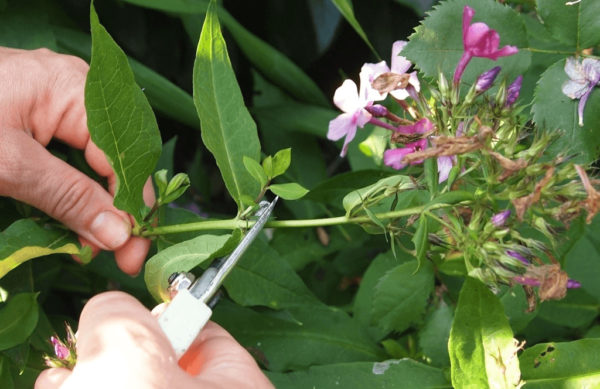 Pruning time is determined depending on the cultivated variety. Early flowering phlox is pruned in early September, and later plants are cut in October, a few weeks after the complete removal of flowers.
Pruning time is determined depending on the cultivated variety. Early flowering phlox is pruned in early September, and later plants are cut in October, a few weeks after the complete removal of flowers.
What to do after trimming
Just pruning the plant is not enough for the action to benefit, the culture needs to provide the necessary care, namely:
- the waste remaining after trimming is burned away from the infield or disposed of in another convenient way;
- the soil around the plant is treated with fungicides before mulching;
- Before they plant the plant, they feed it for several days, introducing superphosphate under each bush.
It is better to transplant phlox after flowering, because planting in the spring will not allow the plant to gain strength by summer.
Fertilizer application
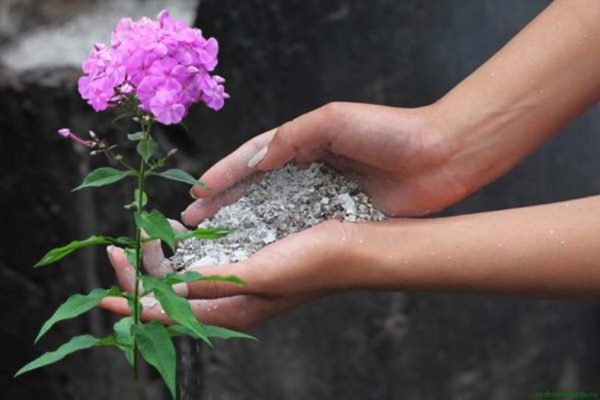 Before feeding, you need to do soil and phlox treatment with drugs such as Fitosporin or Fundazol. These drugs treat the aerial part of the plant and spill the soil in a dry, moderate sunny day. Such funds will help reduce the risk of fungal and bacterial damage. Processing is carried out in the spring or in the fall.
Before feeding, you need to do soil and phlox treatment with drugs such as Fitosporin or Fundazol. These drugs treat the aerial part of the plant and spill the soil in a dry, moderate sunny day. Such funds will help reduce the risk of fungal and bacterial damage. Processing is carried out in the spring or in the fall.
Not earlier than two weeks later, superphosphate is introduced into the soil. Such a fertilizer will saturate the soil with phosphorus and potassium - these nutrients will enter the roots during the winter. What to increase their survival rate.
Buying ready-made fertilizers for flowering crops of open ground, it is better to buy a composition marked with the mark "Autumn". The use of compounds with a high content of these components can provoke rapid growth before wintering, which will cause the death of the culture.
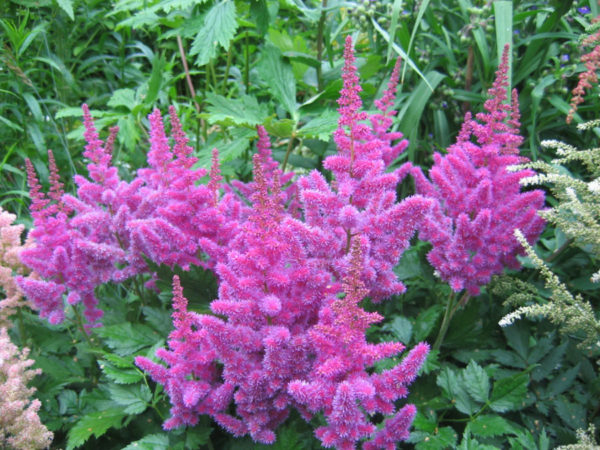 You may be interested in:
You may be interested in:Soil mulching
Mulch provides protection of rhizomes from freezing, and also helps to saturate them with the required nutritional components. Care in the fall includes preparation for winter and pruning phlox. After completion of the procedures, the soil is mulched. Use compost, humus or manure.
Mulch is arranged regardless of the growing conditions for phlox over the age of 4 years. The root system in such plants develops rapidly and often goes outside; in severe frost, the rhizome is affected.
Watering Phlox in Autumn
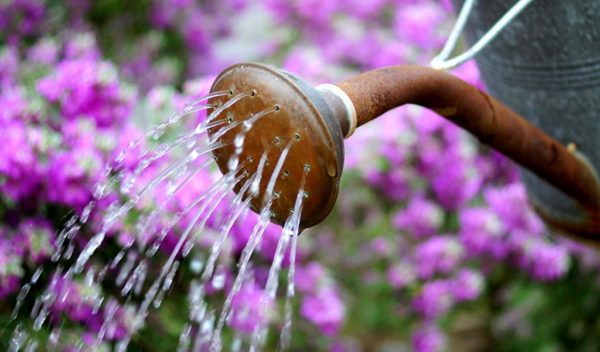 If there is no rain in the autumn, phlox needs to be additionally watered, because sufficient moisture is a condition that ensures a full wintering. Watering the plant is careful, because its root system is vulnerable and is often affected by a variety of bacteria and fungi. It is better to water the phlox with water at room temperature, you need to avoid getting moisture on the leaves and stems - this can provoke rot.
If there is no rain in the autumn, phlox needs to be additionally watered, because sufficient moisture is a condition that ensures a full wintering. Watering the plant is careful, because its root system is vulnerable and is often affected by a variety of bacteria and fungi. It is better to water the phlox with water at room temperature, you need to avoid getting moisture on the leaves and stems - this can provoke rot.
Disease Prevention and Phlox Pest Protection
To maintain plant health, these rules will help:
- regular loosening of the soil in spring and autumn;
- flower transplantation to a new place 1 time in 3-4 years;
- harvesting weeds and fallen leaves from the garden - it is a source of fungal and bacterial lesions;
- land treatment with peroxide;
- the use of fungicides.
The listed rules will help to save the collection.
Shelter for the winter
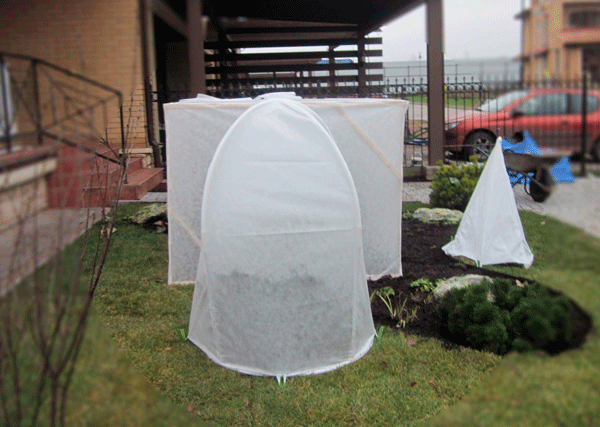 Phlox is a frost-resistant culture that can tolerate a gentle winter without any shelter, but since there are periods of cold weather even in a warm winter, you should not risk a collection of chic plants. For the aboveground part, the danger is a decrease in temperature to -15 degrees, for the underground to -20. Not only severe frosts are dangerous for the plant, but also long thaws, leading to the loss of the snow layer.
Phlox is a frost-resistant culture that can tolerate a gentle winter without any shelter, but since there are periods of cold weather even in a warm winter, you should not risk a collection of chic plants. For the aboveground part, the danger is a decrease in temperature to -15 degrees, for the underground to -20. Not only severe frosts are dangerous for the plant, but also long thaws, leading to the loss of the snow layer.
For shelter use natural materials.It is forbidden to use film, linoleum and other materials for this purpose - the plant under them suffocates. Shelter is removed after eliminating the risks of severe frost in the spring.
Common mistakes in phlox care in autumn and in preparation for winter: take care correctly
The list of major errors includes:
- The use of nitrogen fertilizers in the fall. A large dose of the component accelerates the formation of new shoots and enhances their growth, the roots lose their nutrients and weaken. Because of this, the plant often dies during wintering.
- The plant was early "sealed" for the winter. If warming is still possible, culture should not be warmed.
- Perennial is covered with dense cellophane, fabric or airtight elements. As a result, the plant dies due to rot.
Such errors must be avoided, because they often lead to the death of culture.
Useful tips for phlox care after wintering
After the onset of spring, phloxes often have an unattractive appearance, in order to restore it after lengthening the daylight hours and establishing a plus temperature at night, fertilizing the plant is carried out - this will accelerate growth and restore the root system. Be sure to remove dry shoots and other parts. If the condition can be called critical, it is worth using growth stimulants - Epin, Zircon. Such a biological composition will help awaken sleeping buds and accelerate their growth.
Finally
Phlox is a beautiful, widespread culture, which is not very demanding on growing conditions. Providing simple conditions, you can get a magnificent and grateful flowering. To preserve a perennial plant for the next year, you need the right wintering, otherwise the culture will freeze and be lost. Classic phlox tolerate small frosts, while their Dutch counterparts are more demanding for wintering. If this condition is not possible, rhizomes can be stored in a cool place in the container, planted annually in the spring.

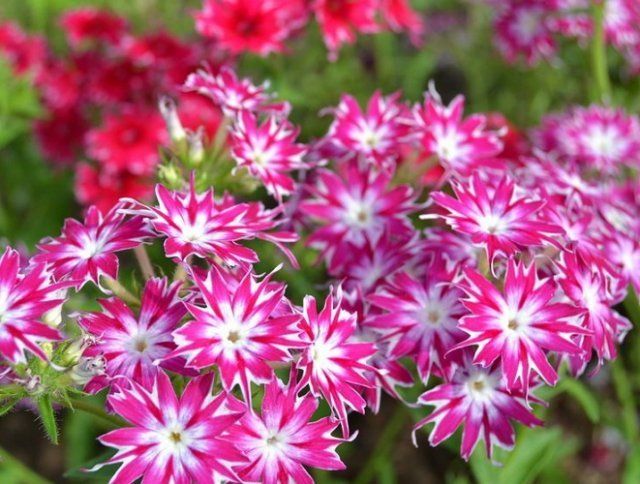
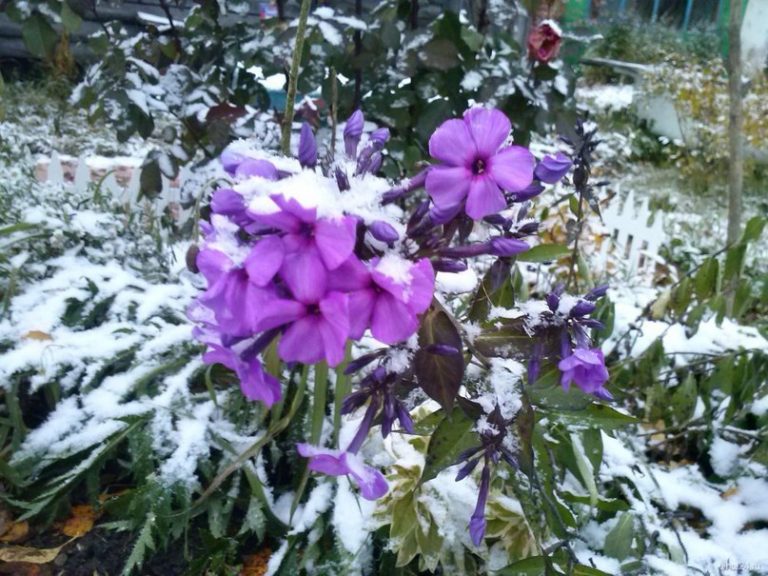
 How to get rid of powdery mildew on phlox
How to get rid of powdery mildew on phlox Planting awl phlox in the garden and caring for it
Planting awl phlox in the garden and caring for it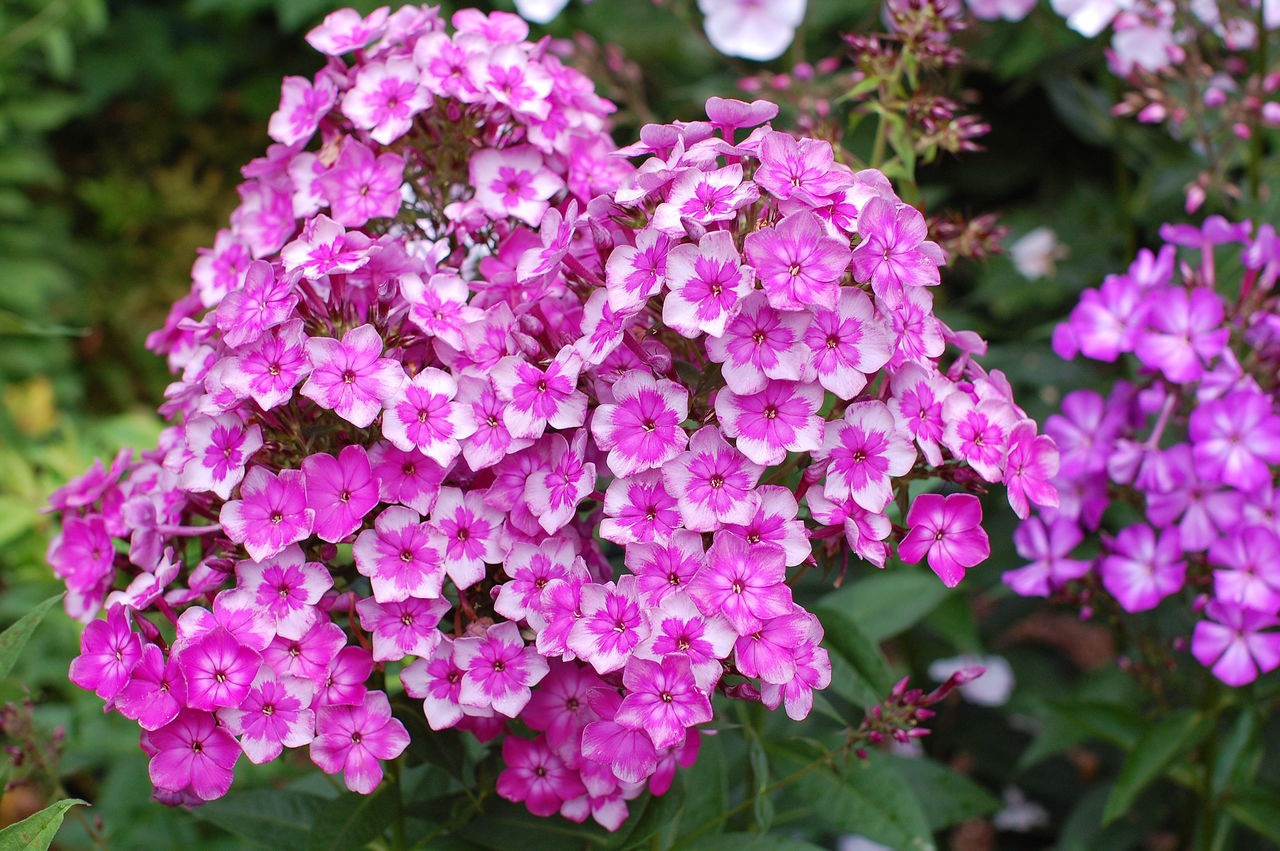 Phlox in the open ground: planting and care
Phlox in the open ground: planting and care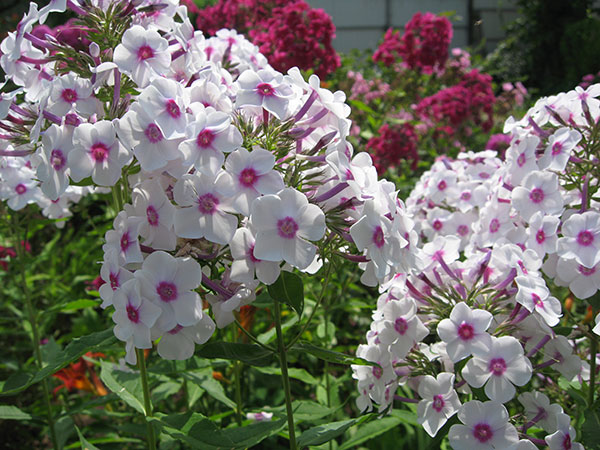 Phlox perennial: planting and care, photo
Phlox perennial: planting and care, photo